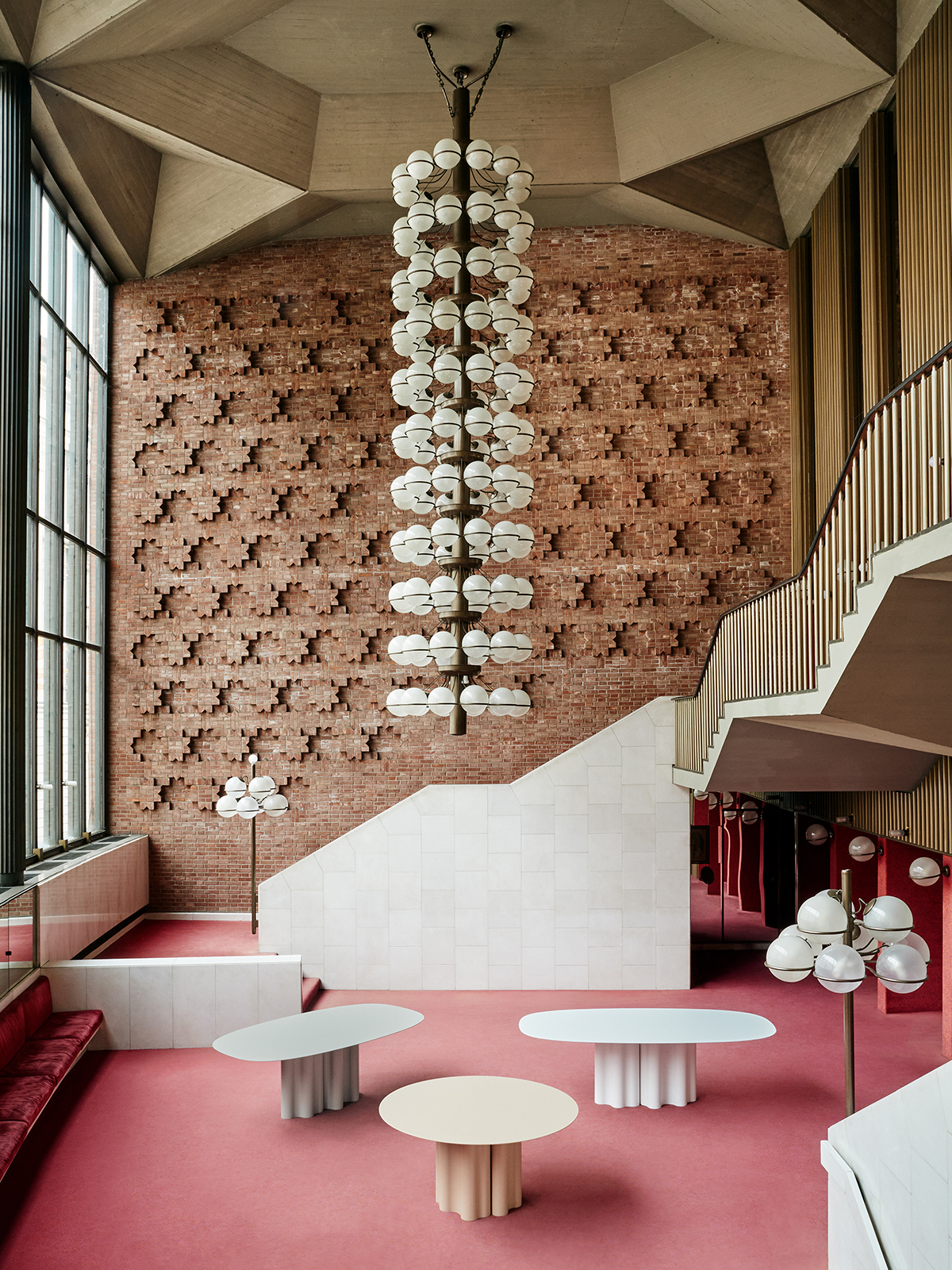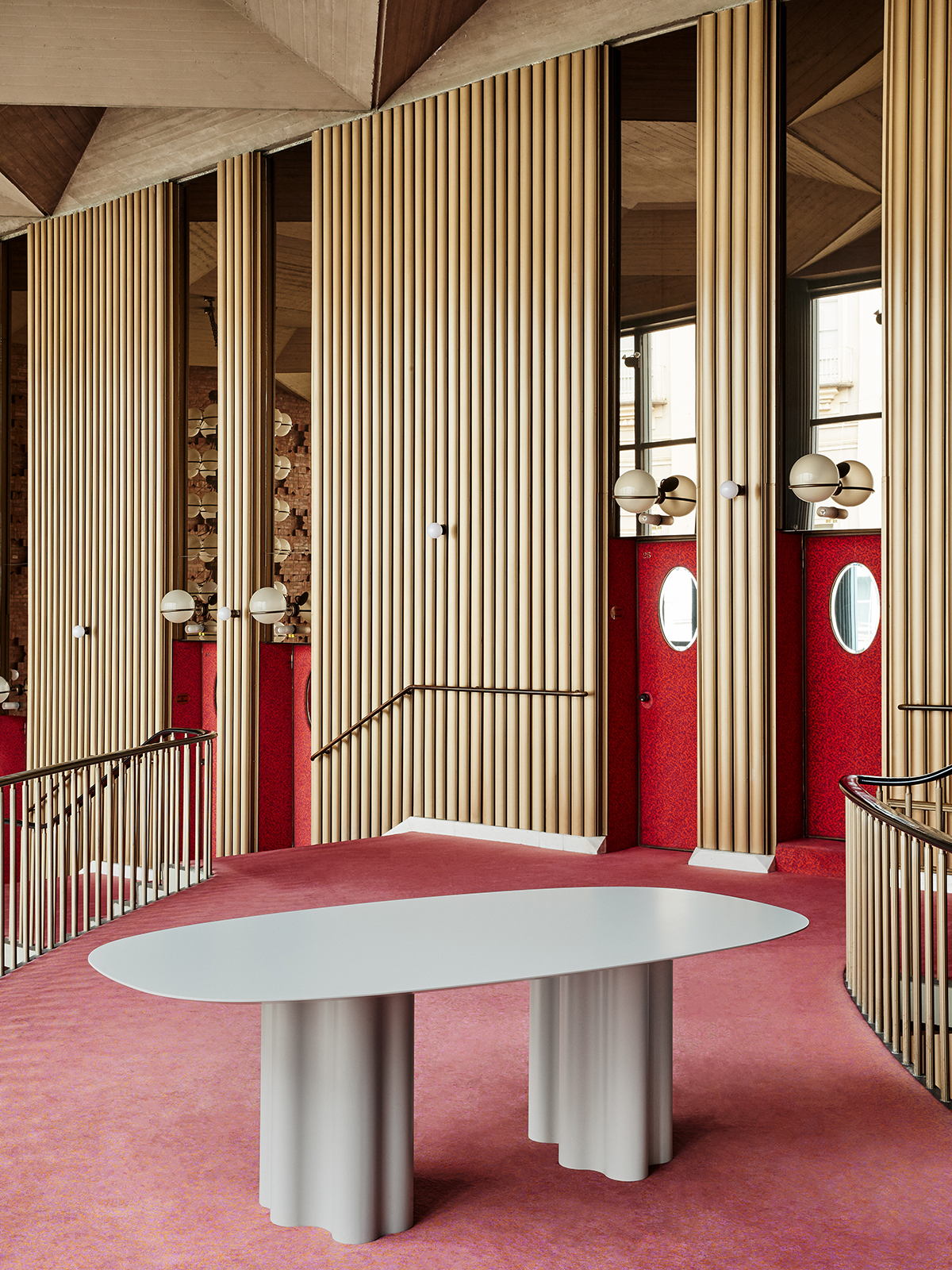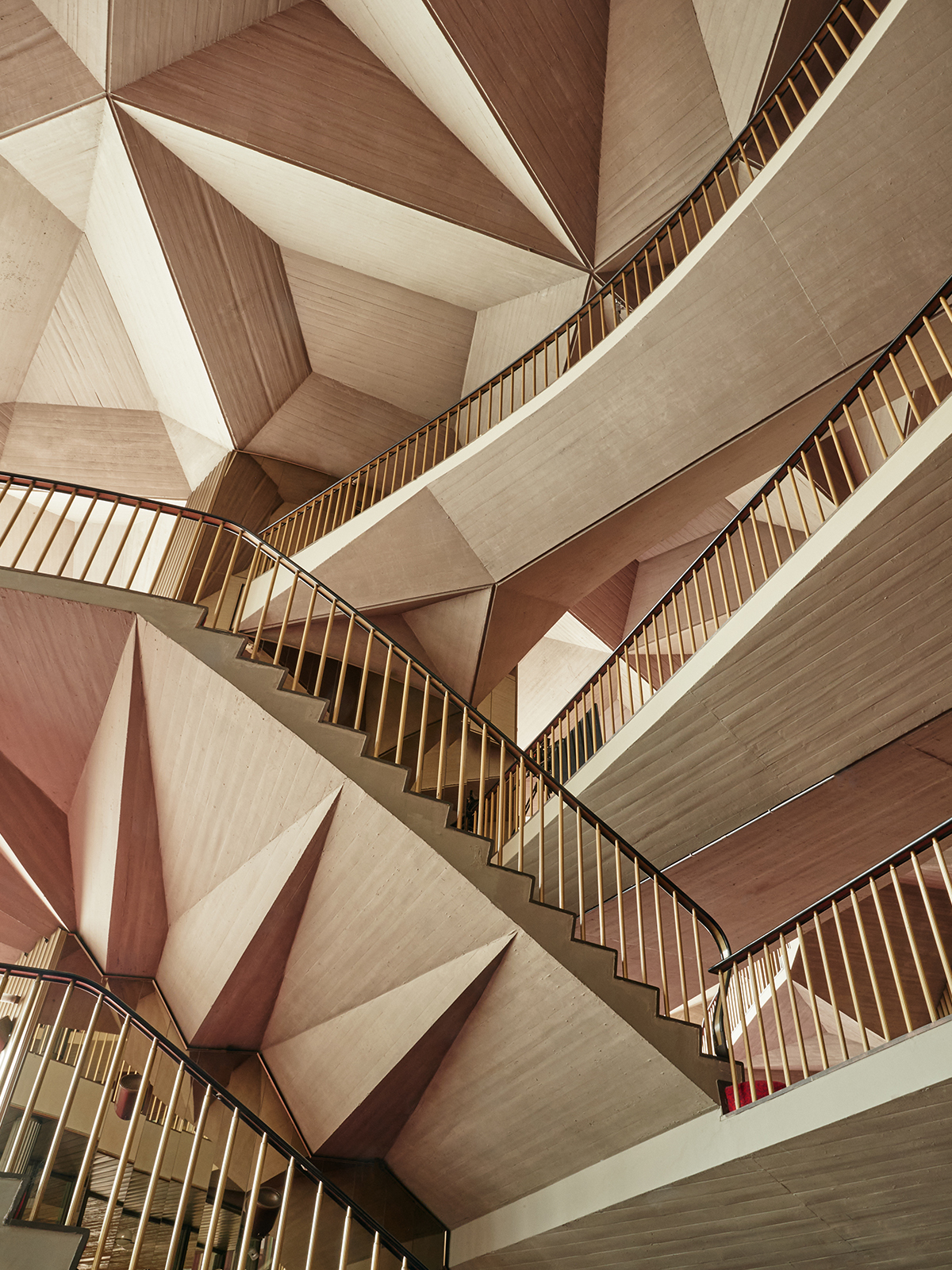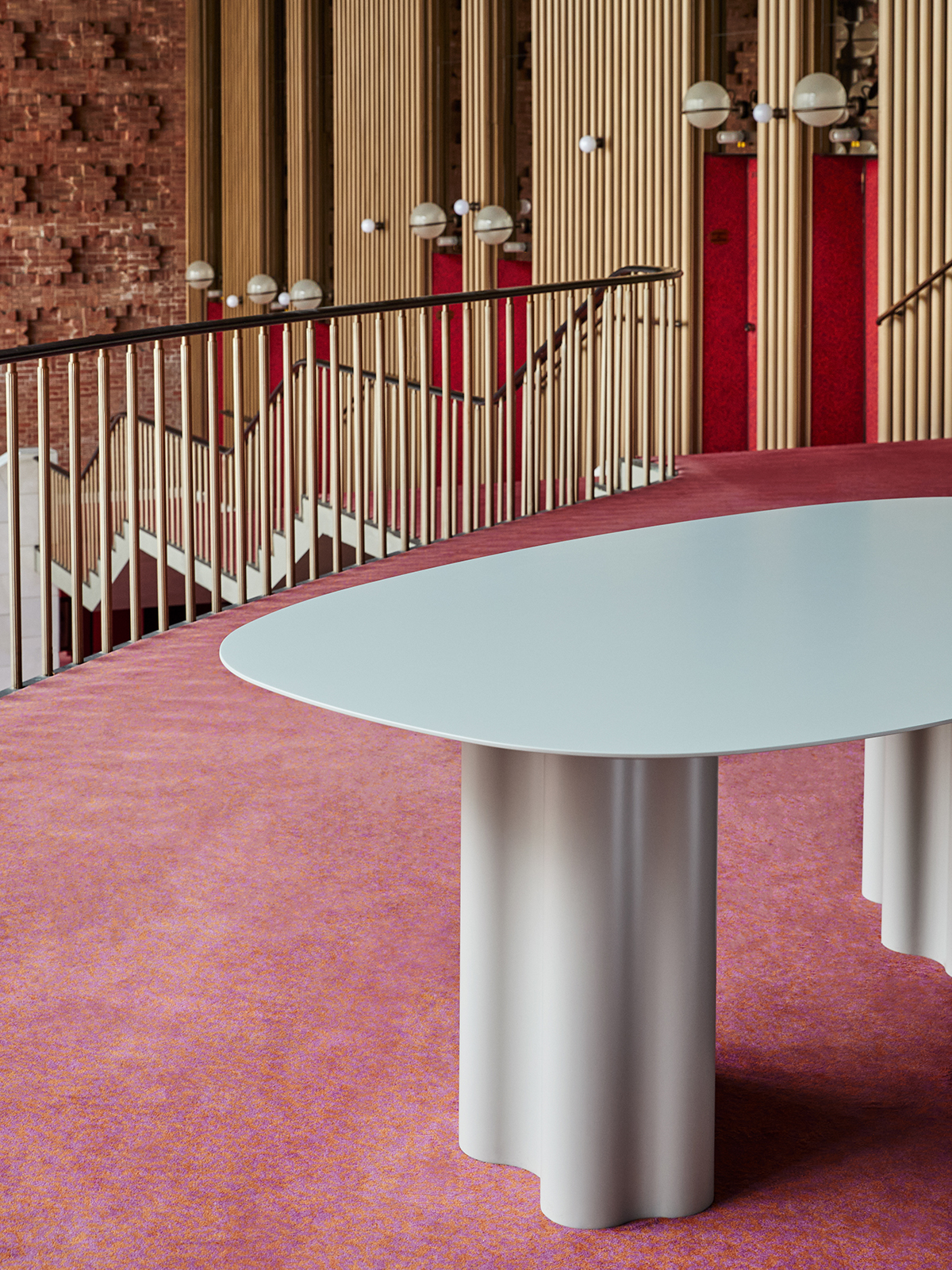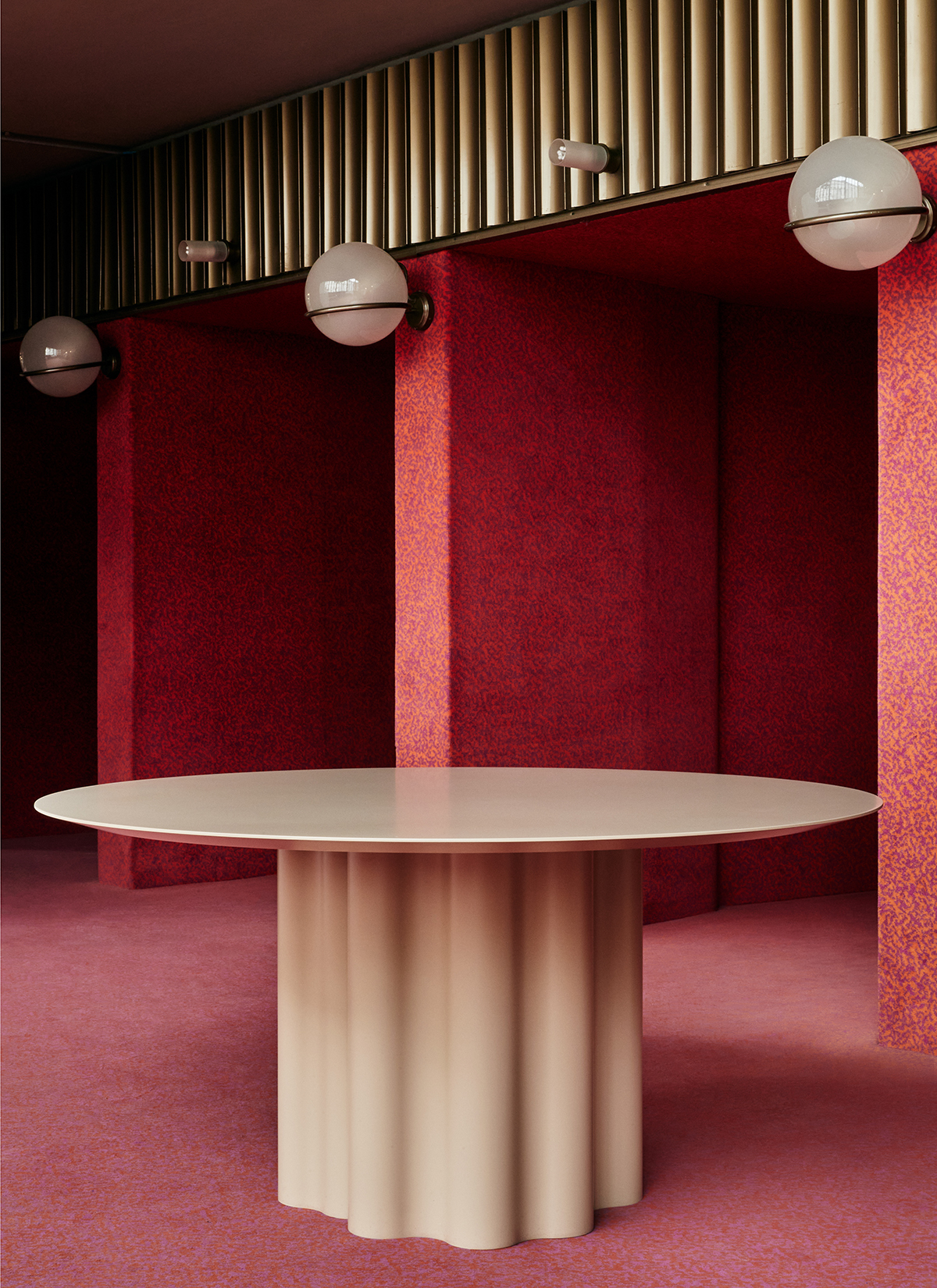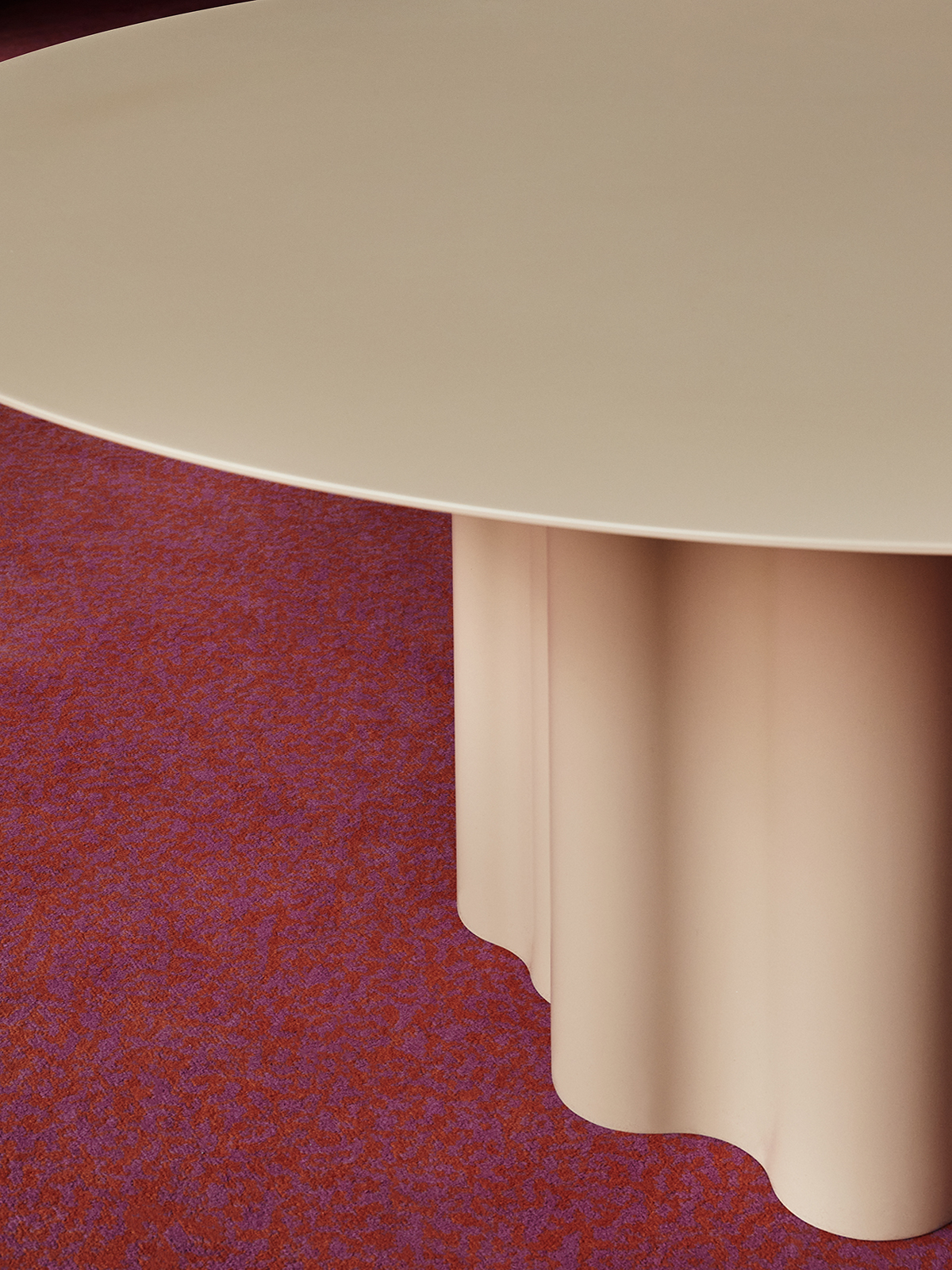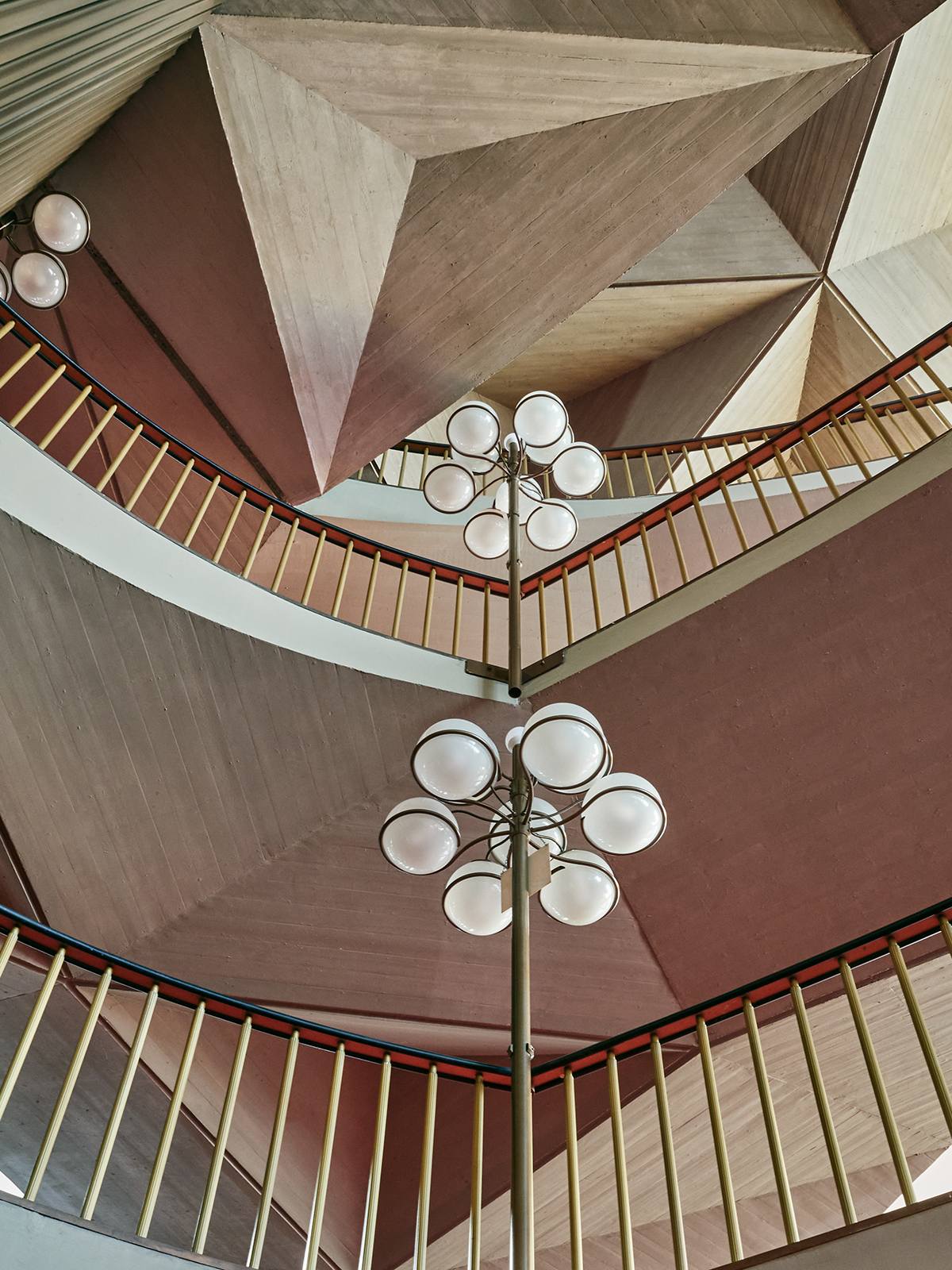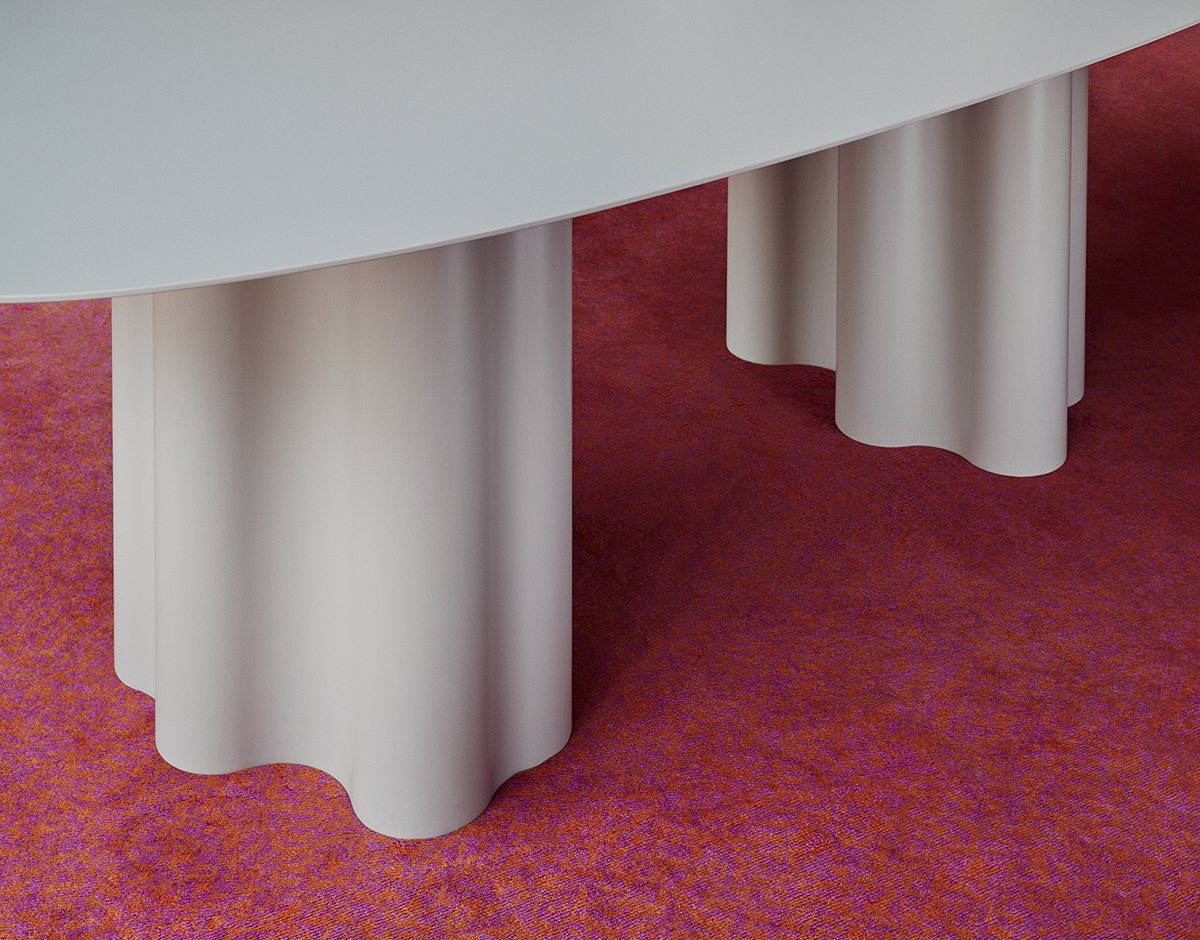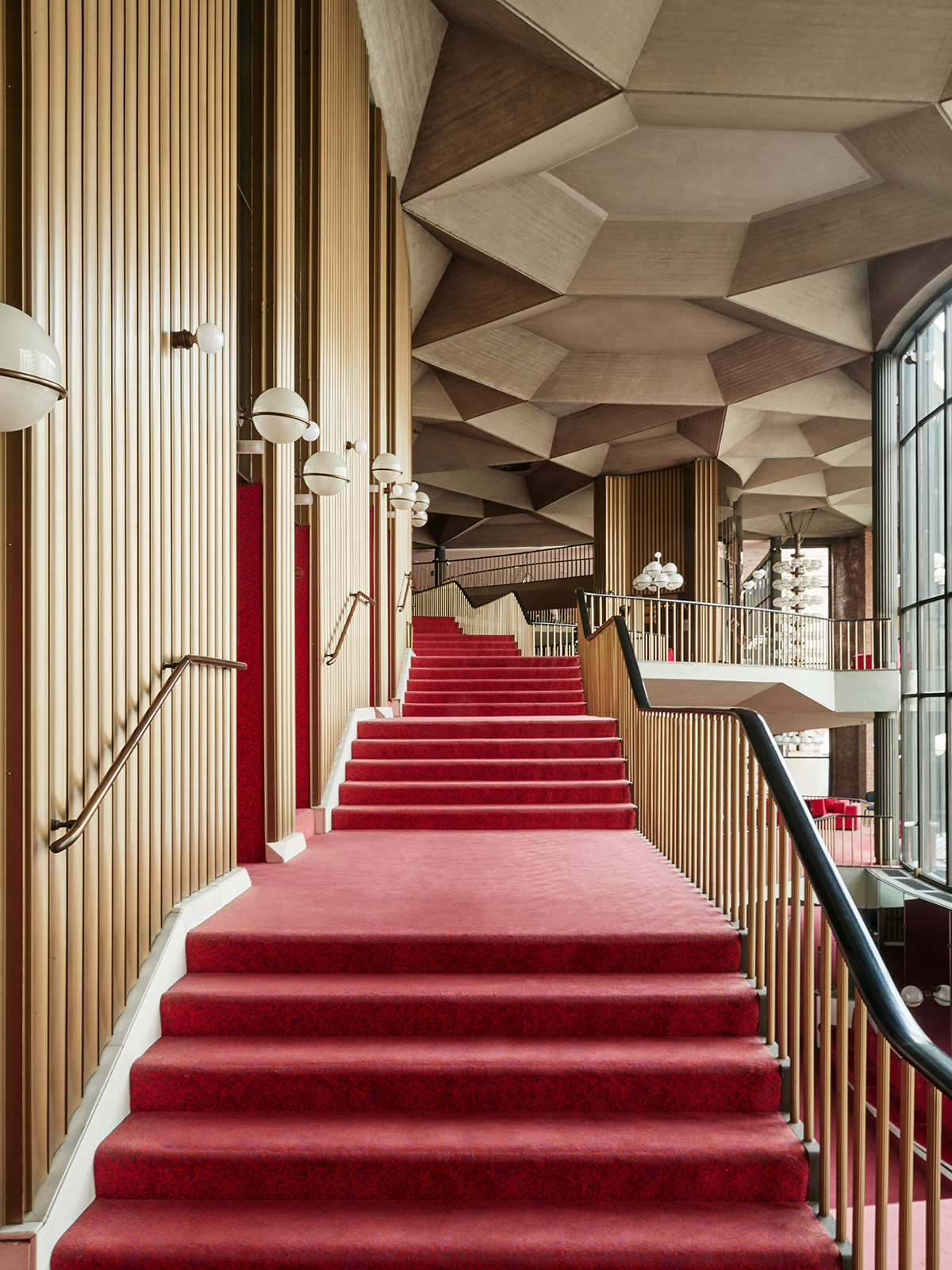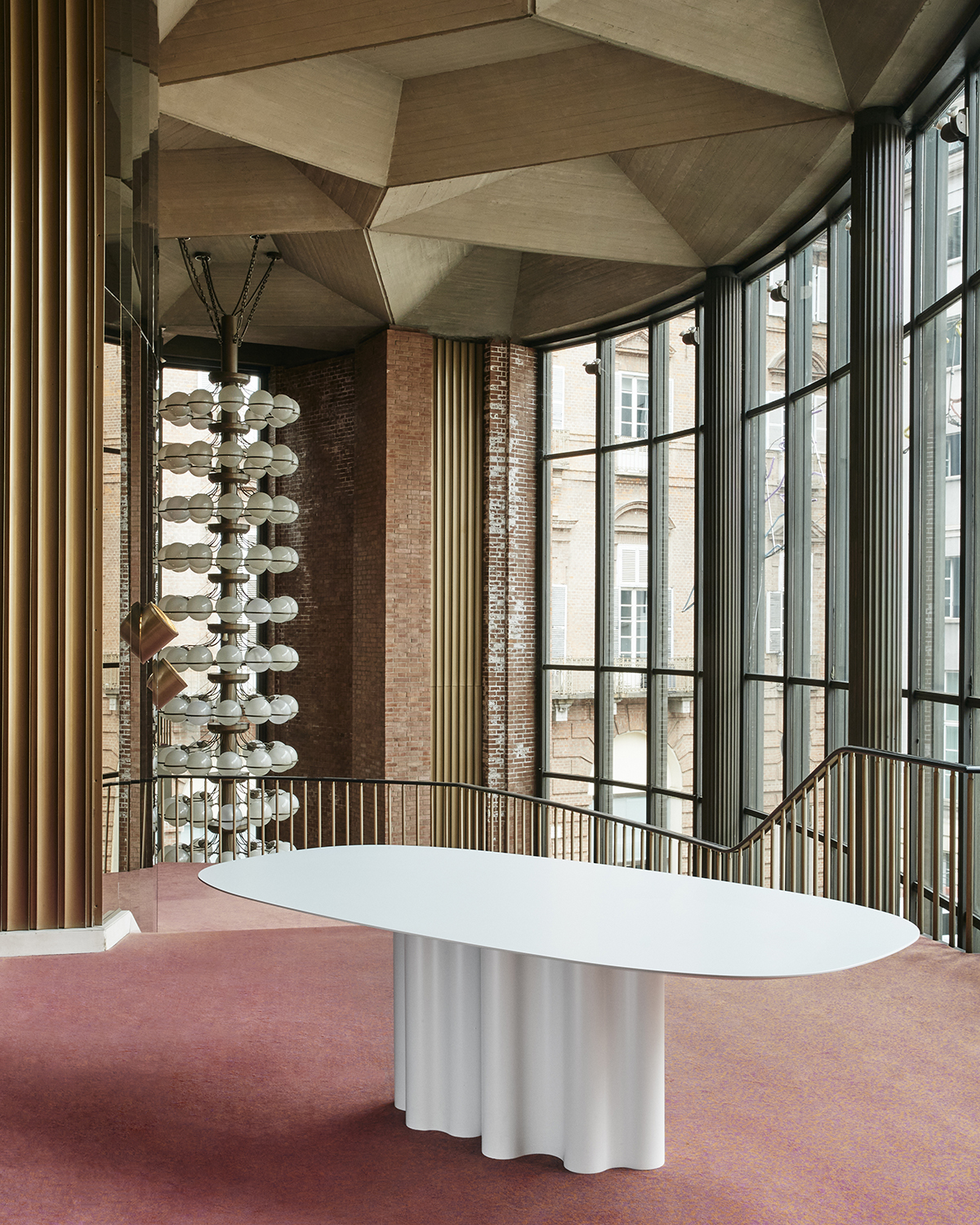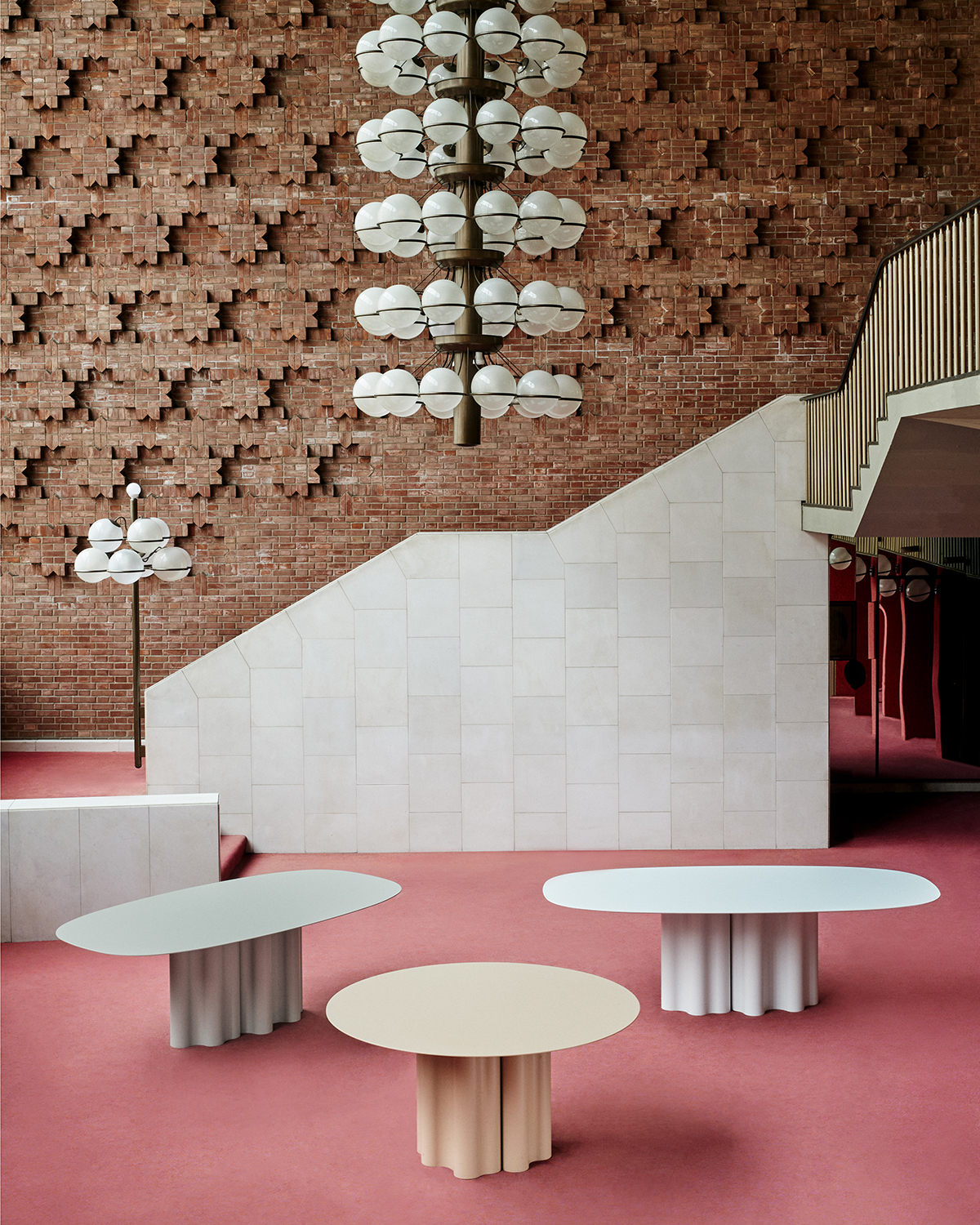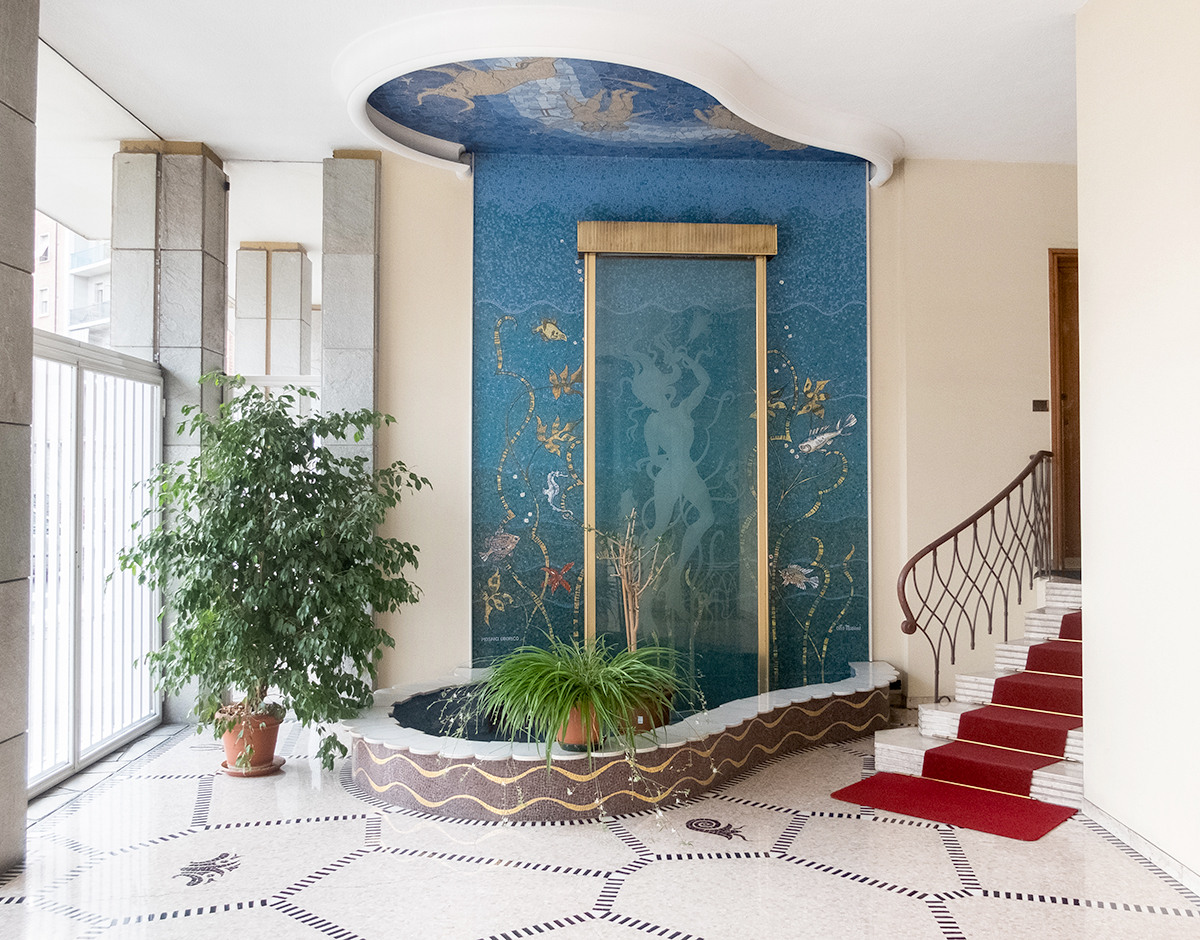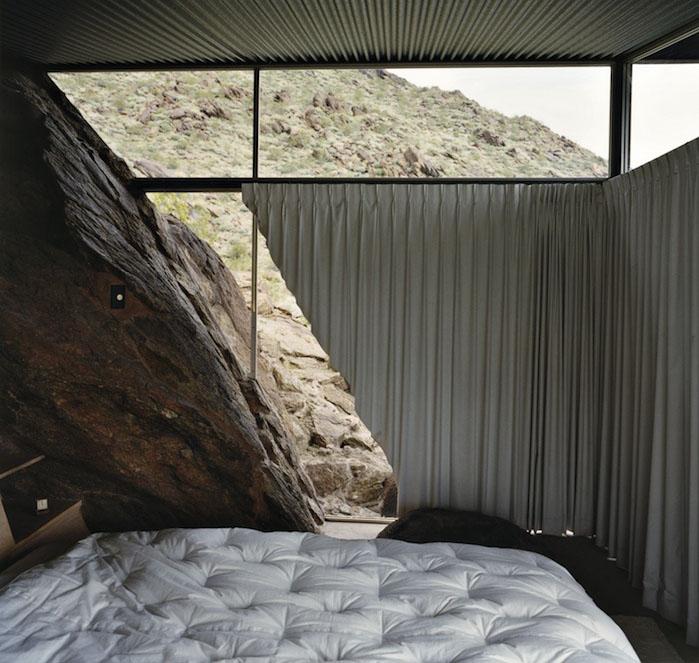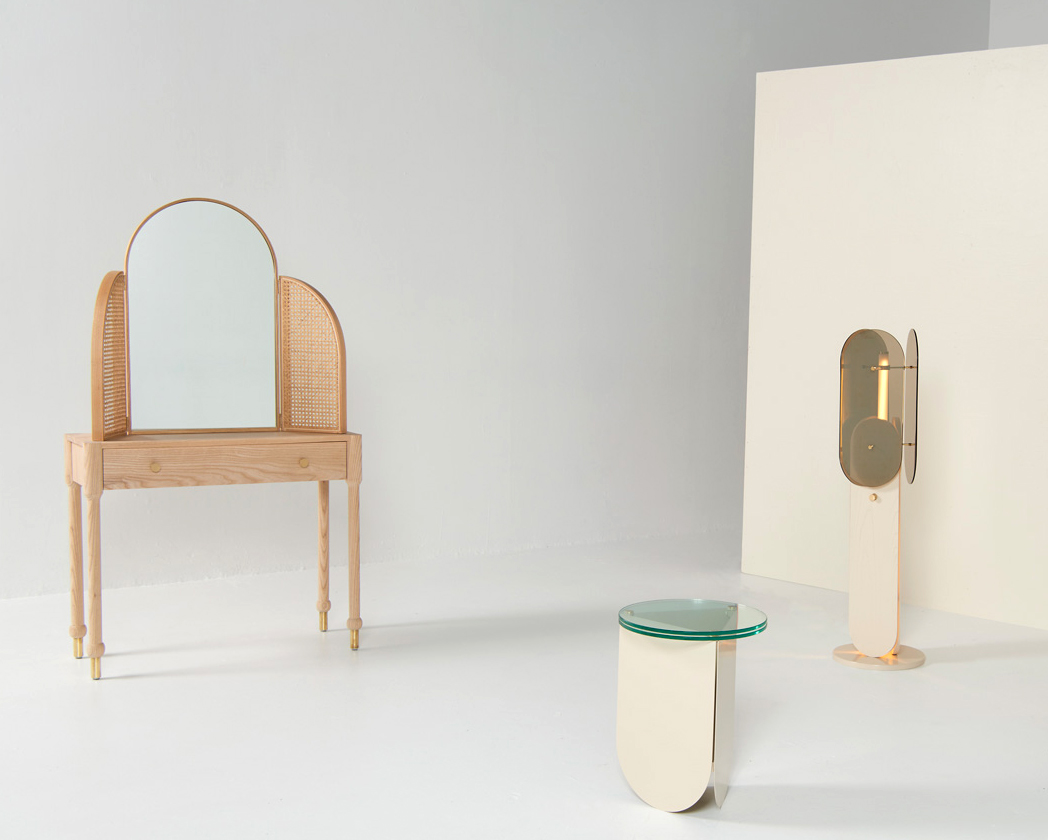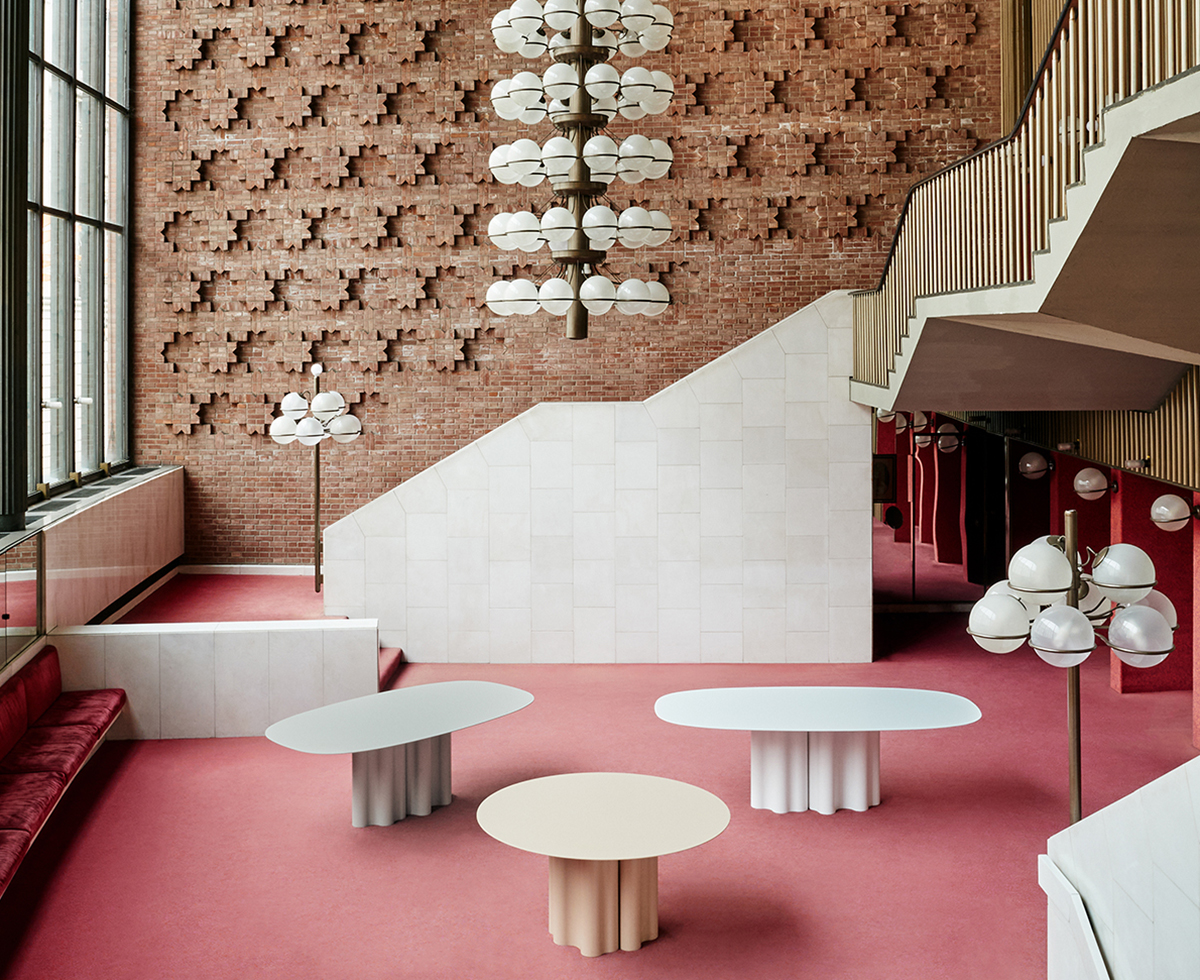
03.03.22
Sighted
This Italian Furniture Brand Made a Clever Trompe L’Oeil Table, Then Shot It in a Carlo Mollino Masterpiece
There’s a famous story from ancient Greece in which two artists try to outdo each other with their realistic painting styles: Zeuxis boasts about his incredibly lifelike representation of grapes, then goes to pull back a curtain to reveal Parrhasius’s masterpiece, only to realize that the curtains are the masterpiece — the first documented use of trompe l’oeil. The lifelike representation of textiles in wood or other solid materials has persisted since, from 19th-century “tablecloth” tables to the gypsum curtains by Harry Roseman that, for the past 20 years, have greeted us every time we’ve landed at JFK’s Terminal 4 in New York. January saw the introduction of an interesting new expression of that style, in the form of Saba Italia’s Teatro Magico table by 967 Arch, a dining table whose sinuous polyurethane base echoes the form of theater curtains and can part like them, too. The brand coincided the launch with the reopening, after a two-year renovation, of Turin’s Teatro Regio, whose Carlo Mollino–designed interior contains its own multitude of visual illusions.
The table was initially developed for very practical reasons — Saba Italia is primarily an upholstered-furniture brand, and despite having quite a few dining chairs in its catalogue, it had no dining table to display them with. The company turned to the Milanese architecture firm 967 Arch to remedy that, asking for a table that would be more poetic and interesting than just four legs and a top. Because of Saba’s foundational use of textiles, co-founder Mauro Pizzi says his team started with the basics of “flowing lines, material, and narrative,” drawing designs that could evoke “the world of textiles meets the fluidity of organic forms, inspired by iconic pieces such as vases by Alvar Aalto for Iittala and the Bouroullec brothers for Vitra,” he says. The final table base comprises two wavy interlocking columns that can either be placed together in one complete oval, staggered, or parted, like a curtain, to two separate ends of a longer tabletop.
The project’s pièce de résistance was a photo shoot inside the ridiculously amazing Teatro Regio, an 18th century theater that, after it burned down in 1936, was rebuilt by Carlo Mollino in the late 60s and early 70s. After a two-year renovation of its scenic system, which has made it one of the most technologically advanced theaters in Europe, Saba managed to photograph the Teatro Magico tables inside its lobby, where their physical expressions are reflected not only conceptually, but in the curves and perception shifts of the architecture itself. Explore the collection — and its breathtaking backdrop — below.
PHOTOS BY STEFAN GIFTTHALER
